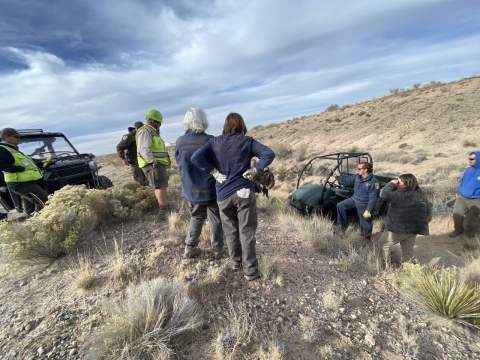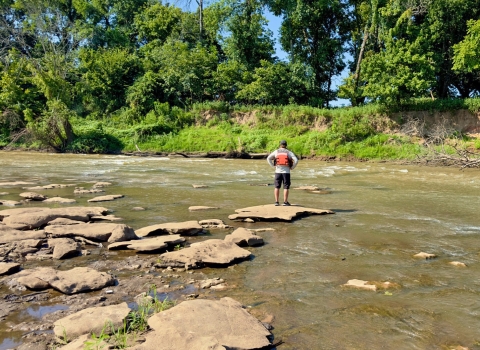Since the expansion of their partnership in 2017, the U.S. Air Force and the U.S. Fish and Wildlife Service have routinely worked together on various wildland fire operations, including prescribed fire and mechanical forest fuel reduction. One of the largest Air Force bases we partner with on wildland fire management is Kirtland Air Force Base in New Mexico. The base occupies over 51,000 acres of brush, timber, and grasslands, and is the sixth largest Air Force base in the country, making strong wildland fire operations crucial for reducing risk of wildfire and protecting base residents.
To better protect Kirtland and surrounding areas from the risk of wildfires, local national wildlife refuge national wildlife refuge
A national wildlife refuge is typically a contiguous area of land and water managed by the U.S. Fish and Wildlife Service for the conservation and, where appropriate, restoration of fish, wildlife and plant resources and their habitats for the benefit of present and future generations of Americans.
Learn more about national wildlife refuge wildland fire program managers partner with Department of Defense firefighters to provide wildland fire training courses. For the first year ever, our New Mexico Fire Management Zone combined efforts with the Air Force to provide a Utility Terrain Vehicle training specific to the wildland fire environment. Participants for this first training course included five individuals from the Air Force and four of our fire personnel.
Wildland firefighters use Utility Terrain Vehicles, or UTVs, for a number of applications, including:
- Emergency response in rough terrain
- Quick transportation of firefighters from one area of the fire to another
- An ancillary water source. UTVs can be specialized to carry additional water that helps with cooling hotspots along a fire’s edge.
After learning the basics of the UTV and what they may encounter while performing wildland fire operations, participants operated the UTV through a variety of obstacle courses and terrain. Operators were required to navigate a coned obstacle course, adequately demonstrate their maneuverability, demonstrate their ability to ride on rough trails – including maneuvering uphill, downhill, sidehill, and through washouts and sand.
These types of trainings provide opportunities for interagency assistance in managing habitats, reducing fire fuels, and managing fire hazards. Trainings provided meet our training standard, enabling better interagency support during wildfire and fuels management operations.
These joint trainings are a concerted effort achieved by Tyrell Lauckner, USFWS Regional Heavy Equipment Coordinator, David Sanchez, USFWS Midwest Region Firefighter, and Steve Dobbs, Kirtland Air Force Base Traffic/Motorcycle/UTV manager.
The U.S. Air Force is a steward to millions of acres of lands set aside for national defense purposes. These lands encompass a variety of intact ecosystems that support habitat for threatened and endangered species and other sensitive wildlife. Since 2012, we have partnered with the Air Force to support wildlife conservation on their installations.
In 2017, existing partnerships were expanded to include wildland fire management, initiating a long-term plan for Fish and Wildlife Service-hosted fire personnel to lead and participate on Air Force Wildland Support Modules (WSM) trainings and assignments. These agreements reduce the risk of wildfires and enhance the protection of ecosystems under Air Force stewardship, benefiting our mission to allow protection of land and waters essential for the conservation of threatened and endangered species.





